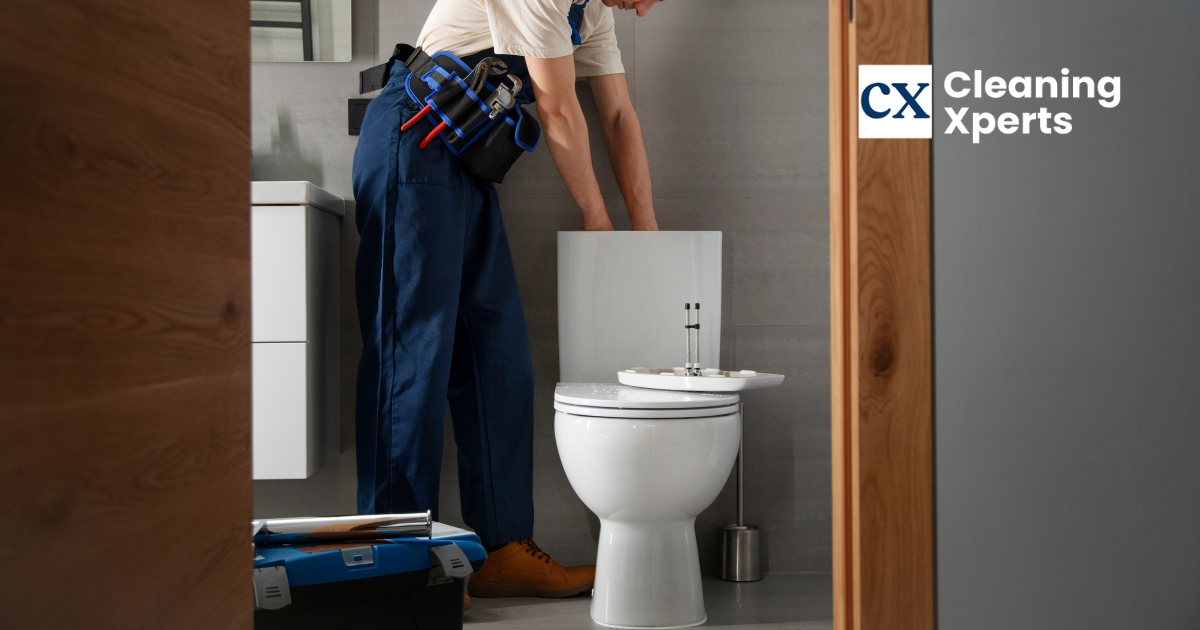Keeping bathroom tiles clean is an important part of maintaining a healthy home. Bathroom tiles are prone to collecting dirt, grime, soap scum, and mildew if not cleaned regularly. Allowing these buildups to remain can create an unsanitary environment and lead to damaged tiles over time.
Fortunately, cleaning bathroom tiles does not have to be a daunting chore. With some simple cleaning tips and products readily available at home, you can keep your bathroom tiles looking fresh, sanitary, and well-maintained. This article will provide helpful tips for effectively cleaning bathroom tiles, from cleaning regularly to disinfecting grout. Following these simple steps for tile care can help extend the life of your tiles while promoting better hygiene.

Clean Regularly
Cleaning your bathroom tiles on a regular basis is one of the best ways to keep them looking their best. When you allow dirt, grime, soap scum, and minerals from water to build up over time, it becomes much harder to remove. The longer debris sits on the tile, the more likely it is to stain or etch into the surface.
Getting into a weekly or biweekly cleaning routine helps prevent stubborn buildup that requires heavy-duty cleaning methods. Set aside time each week or after periods of heavy use to give the tiles a good scrub. Quickly wiping grime away before it has a chance to harden will make maintenance much easier.
The grout between tiles is especially prone to staining and discoloration when allowed to get dirty. Regular cleaning will keep the grout looking new. It also helps prevent soap scum rings in showers and tubs. Establishing a routine of frequent light cleaning is better than leaving buildup sit until the tiles need a deep clean.

Use Mild Cleaners
When cleaning bathroom tiles, it’s important to use mild cleaners that won’t damage the tiles or grout. Harsh chemicals like bleach, ammonia, and acidic cleaners can degrade and discolor tile over time. Instead, stick to gentle cleaners like dish soap, vinegar, baking soda, and hydrogen peroxide.
Dish soap mixed with warm water makes an effective everyday bathroom tile cleaner. Apply the diluted soap with a soft sponge or scrub brush. Rinse thoroughly. The soap will cut through dirt and grime without being too abrasive.
For tougher stains, mix equal parts vinegar and water in a spray bottle. The natural acetic acid in vinegar can help dissolve soap scum and hard water deposits. Spray onto the tiles and let sit for a few minutes before scrubbing and rinsing.
Baking soda also works well. Make a paste with water and apply with a damp sponge. Let it sit briefly before scrubbing and rinsing. The baking soda will help lift dirt without damaging grout or tile sealants.
Hydrogen peroxide is another good option for whitening and disinfecting tiles. Spray full-strength onto the surface and let bubble for a few minutes before scrubbing and rinsing.
The key is to always avoid harsh chemicals and stick to mild, natural cleaners that get the job done without damaging bathroom tiles or grout over time. Gentle dish soap, vinegar, baking soda and hydrogen peroxide are affordable, effective options.
Scrub Gently
When cleaning bathroom tiles, it’s important to scrub gently to avoid damaging the grout or tiles themselves. Use a soft-bristled brush or a sponge to gently scrub away dirt and grime. Avoid using anything abrasive or harsh, as this can scratch the surface of the tiles or wear down the grout over time.
Apply minimal pressure as you scrub. Let the cleaning solution do most of the work loosening up the built-up grime. Excessive scrubbing or using too much force can gradually erode and wear down the grout. Re-apply the cleaning solution to stubborn spots and give it time to soak in before scrubbing again gently.
Take extra care around the grout lines. Grout is porous and more susceptible to damage from harsh scrubbing. Use small circular motions concentrated on the grimy areas rather than broad, forceful strokes over the entire surface. Rinse thoroughly after scrubbing to wash away all the lifted dirt.
With a gentle touch and the right cleaning solutions, you can safely scrub your bathroom tiles clean without causing any damage. The key is using soft, non-abrasive tools and scrubbing only as needed to lift the dirt and buildup. Your tiles will sparkle without harming the grout or surface.
Target Grime Buildup
Focus on areas like grout lines, corners, and along the tub or shower when cleaning bathroom tiles. These areas are prone to grime buildup for a few reasons:
- Grout is porous, so it easily absorbs dirt, oils, and soap scum over time. This leads to discoloration and a grimy appearance. Pay extra attention to scrubbing grout lines. Use a grout brush or toothbrush to help remove buildup from the crevices.
- Corners and crevices don’t get as much water exposure during showering/bathing. This allows grime to accumulate more easily. Use a small brush to scrub corners thoroughly.
- The tub and shower surround see a lot of water flow, along with exposure to soap scum, body oils, and shampoos. Be diligent about scrubbing the tile borders along the tub and shower to prevent yellowing or stained caulk. A magic eraser also works well.
Regular scrubbing of these problem areas helps prevent lasting damage or stains on grout and caulk. It also keeps the overall look of the tile clean and bright. Don’t forget to rinse thoroughly after targeting buildup in crevices.
Disinfect Periodically
Disinfecting your bathroom tiles regularly is important for killing germs and preventing mold growth. It’s recommended to disinfect your tiles at least once a month.
You can use store-bought disinfecting cleaners or make your own disinfecting solution by mixing 1/2 cup of bleach into 1 gallon of water. Make sure to check the label of any cleaners and ensure they are approved for use on the tile and grout in your bathroom.
When disinfecting, apply the cleaning solution and let it sit for 5-10 minutes before rinsing thoroughly. This allows time for the disinfectant to kill bacteria and viruses. Pay close attention to grout lines and corners where grime can hide.
Disinfecting monthly helps keep your bathroom tiles sanitary and mold-free. It’s an important part of a good bathroom cleaning routine.
Rinse Thoroughly
After cleaning your bathroom tiles, it is crucial to rinse them thoroughly with clean water. This helps remove any cleaning product residue that may be left behind. You want to ensure you rinse away all traces of the cleaner.
Any residue that remains on the tiles can attract more dirt and grime over time. The residue acts as a magnet, bonding with particles of dirt. This can lead to a rapid buildup of stains and soils on your once clean tiles.
Rinsing thoroughly flushes away all leftover cleaning agents, hard water deposits, and loosened grime. Aim to rinse until the water runs completely clear. Pay close attention to grout lines and crevices where residue can hide.
Use a clean microfiber cloth to wipe tiles and remove pooled water after rinsing. Make sure no moisture is left standing on the tiles or grout. Remaining moisture can allow soils to redeposit back onto the surfaces.
Properly rinsing bathroom tiles is a simple step that ensures your thorough cleaning job lasts. Take the extra minute to rinse completely. Your tiles will stay pristine and shiny for longer, saving you time on future cleanings.
Dry Properly
It’s important to wipe off any excess moisture after cleaning bathroom tiles so they can dry quickly. Lingering water can lead to issues like soap scum buildup, hard water spots, and mildew growth.
Use a microfiber cloth or soft towel to gently blot moisture from tile surfaces and crevices. Pay extra attention to corners, edges, and grout lines where water can pool. It may help to go over the tiles a few times to absorb as much liquid as possible.
You may need to use a hairdryer on a low setting to target stubborn droplets in crevices or textured tile. Just don’t hold it too close or let it overheat the tiles.
Proper drying keeps bathroom tiles looking their best in between cleanings. It prevents discoloration, stains, and damage from moisture exposure over time. Quick drying also inhibits mold and mildew growth in hard-to-reach areas that stay damp.
With a little extra care after washing tiles, you can keep them dry, fresh, and clean longer. Consistent drying makes the next cleaning much easier too.
Seal Grout
Applying grout sealant protects grout from stains and damage. Grout is porous, so it easily absorbs liquids, dirt, grime, and bacteria. Sealing it creates a protective barrier.
It’s recommended to seal grout lines every 1-2 years. Use a high-quality grout sealer and apply it carefully according to the product instructions. Ensure the grout is fully dry first. Apply the sealer evenly across the grout lines using a small paintbrush or applicator. Let it soak in for 5-10 minutes, then wipe away any excess.
Sealing grout regularly will help prevent stains, mildew buildup, and erosion. It locks out moisture and gives grout a fresh, clean appearance. Well-sealed grout will be easier to maintain over time. Reapply grout sealer as needed based on usage and traffic. Properly sealing grout can extend the life of your tile floors or walls.
When to Call a Professional
Even with regular cleaning, there may come a time when your bathroom tiles need more intensive work. Here are some signs it may be time to call in a professional tile cleaning service:
- Severe Buildup: If you notice a thick layer of soap scum, hard water deposits, or other grime that is difficult to remove with your normal cleaning routine, a professional deep clean may be needed. Years of buildup can etch into the tile and grout, requiring commercial-grade cleaners and tools to restore.
- Recurring Stains: Stains from mold, mildew, and hard water can be stubborn. If the same stains keep reappearing shortly after cleaning, the porous grout may be permanently discolored and need re-grouting. Professionals have access to oxygen bleach cleaners that can penetrate and de-stain grout.
- Mold Issues: Mold and mildew growth between tiles indicates excess moisture. A professional can treat the mold, identify and fix any leaks or ventilation issues, and apply antimicrobial sealants to grout lines to prevent recurrence. Mold left untreated can damage surfaces and pose health hazards.
- Major Renovations: After major bathroom renovations involving tile repair or replacement, a professional deep clean can remove construction dust and debris missed by DIY efforts. Their powerful wet vacuums can also extract any latent moisture from new grout and setting materials.
Don’t struggle with lackluster outcomes. When heavy-duty tile cleaning is needed, the equipment, products, and expertise of professionals can restore your surfaces’ original beauty and maintain a healthy bathroom environment.


